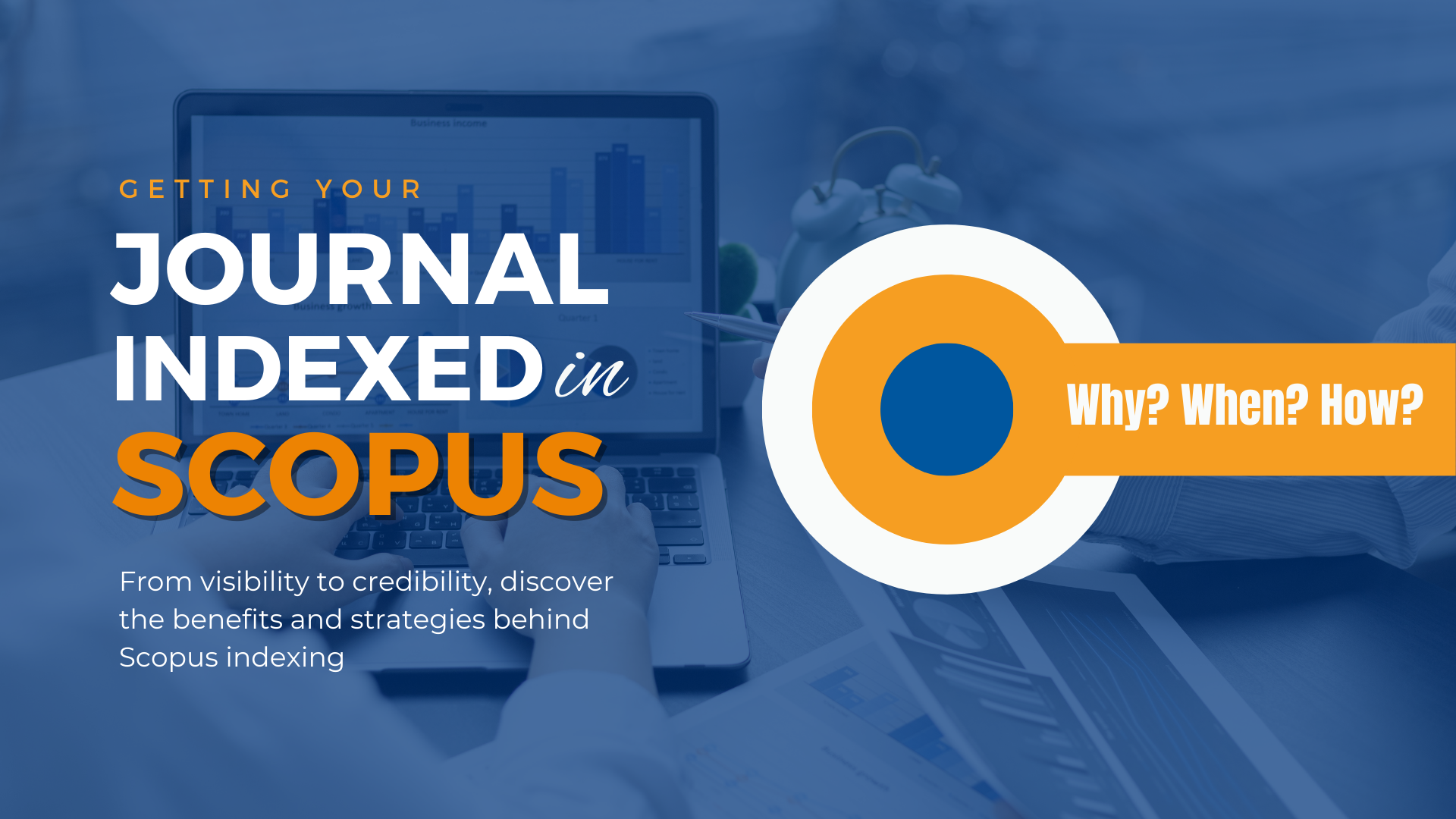
Home » Getting Your Journal Indexed in Scopus: Why, When, and How

Leading scientific research indexer with a sizable readership worldwide, it actively invites new submissions as long as they satisfy certain requirements, of course.
Have you been considering if your journal or journals might work well with Scopus? And the other way around? If yes, continue reading to find out more about the benefits of using Scopus and how to get started with the application process.
Lingaya’s Journal of Professional Studies
Going back to fundamentals, seeking to have your journals added to abstracting and indexing databases is one of the most effective ways to reach additional readers, writers, librarians, educators, and others.
Adding journals to well-known general and discipline indexes increases their academic stature and impact, which can boost their article citation possibilities. Furthermore, many indexes provide citation counts and audience data for the content they cover, making it simpler for journals and authors to track the influence of publications over time.
Scopus, which advertises itself as a “source-neutral abstract and citation database curated by independent subject-matter experts” since its creation in the early 2000s, has been recognized as one of the best research indexes.
Funding for Research: Why, When, and How?
As previously stated, there are several benefits to having journals included in the Scopus database. Scopus is well-known for its high degree of academic rigour, which includes an annual journal re-evaluation process as “an incentive for journals to maintain their high content quality.” Scopus also offers a variety of metrics for indexed content, including:
Role of Ethics Committee in Research Writing
The Content Selection and Advisory Board (CSAB) of Scopus oversees a stringent selection procedure. A multinational group of scientists with specialised knowledge in specific fields makes up the CSAB.
Prior to forwarding with the Scopus application procedure, bear in mind that your journal will be evaluated based on many standards, which are divided into five areas, as shown below.
Journal Policy
Content
Journal Standing
Publishing Regularity
Online Availability
Next, go to the Scopus submission website for pre-evaluation and complete the form there.The last step is to send in a Title Suggestion form that has been filled out after your application is prepared for submission and review by the CSAB. You’re probably wondering now how long it will take to hear back from Scopus.
Conclusion-
Scopus clearly has a lot to offer publishers wishing to reap the full benefits of having their journals indexed, not the least of which is its reputation for academic rigour and article-level statistic tracking. Without a doubt, information contained in Scopus reaches many of the world’s leading research institutes.
From
Dr. Swapnila Roy
Associate Dean-R & D
Lingaya’s Vidyapeeth
Top University in Faridabad
RECENT POSTS
CATEGORIES
TAGS
Agriculture Agriculture future AI Architecture artificial intelligence Bachelor of Commerce BA English BA Psychology BTech AIML BTech CSE BTech Engineering Business management career Career-Specific Education career guide career option career scope Civil engineering commerce and management Computer Science Computer science engineering Data science degree education Engineering Engineering students English Literature english program Fashion Design Fashion design course Higher Education Journalism journalism and mass communication law Law career Machine Learning Master degree mathematics MBA MBA specialization Mechanical Engineering Pharmacy Psychology Research and Development students
University Address: Nachauli, Jasana Road, Faridabad, Haryana
For Admissions :
Toll Free: 1800-120-4613
Mobile : 8447744303 | 8447744304 | 8447744306 | 8447744309
8700003974 | 8700003411 | 8700003749
Address: C-72, Second Floor, Shivalik, Near Malviya Nagar,
Above HDFC Bank, New Delhi 110017
Landline No. - 011-46570515 / 45138169 / 41755703
Mobile No. - +91-7303152412 / +91-7303152420 / +91-9311321952
Jagmani Kutir, Ground Floor, Road No-1, Rajeev Nagar,
Near Darbar Marriage Hall, Patna-800024, Bihar
Contact No: 9818352069/ 8130120095
Mail: kanhaiya@lingayasvidyapeeth.edu.in
Copyrights © 1998 - 2025 Lingaya's Vidyapeeth (Deemed To Be University). All rights reserved.
It is important to note that the following email IDs and domains are fraudulent and do not belong to our university.
LV only conducts physical/online verification of any document related to examination on the following email id: